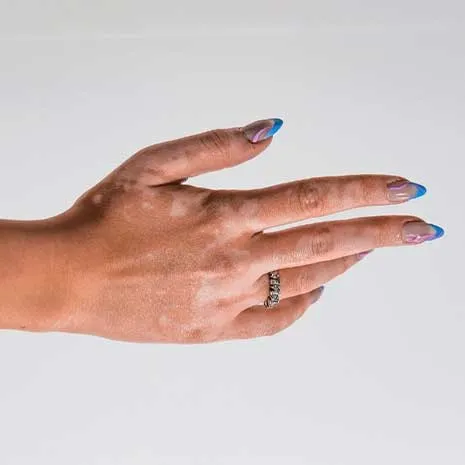How to Recognize the Early Stage of Vitiligo

How to Recognize the Early Stage of Vitiligo
- 7 July 2025
- 193

Why Early Detection Matters
Vitiligo is a chronic and progressive autoimmune condition that leads to loss of skin pigmentation. Early diagnosis plays a crucial role in slowing its progression, improving treatment outcomes, and reducing psychological impact. But how can you recognize the early stage of vitiligo? What are the first signs, and where does it usually begin?
What Is the Early Stage of Vitiligo?
The early stage of vitiligo refers to the phase when melanocytes begin to malfunction or disappear, but visible pigment loss is still limited. In some people, early signs are obvious, while in others, they may develop gradually and go unnoticed.
First Symptoms of Early-Stage Vitiligo
1. Lightening of Skin Tone
- In fair-skinned individuals, early signs may be difficult to detect.
- Some areas appear faded or less pigmented.
- Sun-exposed areas tend to show these changes more clearly.
2. Small, Well-Defined Pale Patches
- Initial patches are usually 1–2 cm wide and have clearly defined edges.
- The center appears lighter but not necessarily completely white at first.
3. Mild Itching, Burning, or Tingling
- Some patients report mild irritation or itching in early spots.
- These symptoms may indicate early immune activity in the skin.
4. Premature Whitening of Hair
- Early vitiligo may cause localized depigmentation in hair-bearing areas.
- Sudden whitening of eyelashes, eyebrows, or scalp hair can be an early sign.
5. Discoloration in Mucosal Areas
- Loss of color on the lips, inside the mouth, or genital areas may occur early.
- These zones are commonly affected in the initial phase.
Where Does Vitiligo Typically Start?
Vitiligo often begins in areas that are frequently exposed to trauma or sunlight, such as:
- Backs of hands and fingers
- Around the mouth and lips
- Eye area
- Elbows and knees
- Toes and feet
- Genital and mucosal surfaces
How Is Early-Stage Vitiligo Diagnosed?
Dermatologists use the following tools and methods to detect early vitiligo:
Wood’s Lamp Examination
- A special UV light helps highlight areas of pigment loss.
- Depigmented skin fluoresces white-blue under this light.
Clinical Evaluation
- Examining the shape, size, and location of lesions
- Taking a detailed family and medical history
Blood Tests
- To assess for associated autoimmune conditions, especially thyroid disorders or vitamin deficiencies
Photographic Monitoring
- Tracking the progression of lesions with regular photos is highly useful in early-stage management
When Should You Be Concerned?
Consider seeing a dermatologist if:
- You have a family history of vitiligo
- You notice early greying of hair
- Skin appears lighter after stress, infection, or trauma
- There is unexplained discoloration in mucosal areas
These signs may indicate the early onset of vitiligo.
Why Start Treatment Early?
Starting treatment in the early stage provides several advantages:
- Melanocyte destruction is not yet complete
- Better response to topical therapies and phototherapy
- Slows or halts progression
- Reduces cosmetic and psychological burden
Early Treatment Options for Vitiligo
|
Treatment |
Description |
|
Topical corticosteroids |
Reduce inflammation and immune activity |
|
Calcineurin inhibitors |
Especially useful for sensitive areas like the face |
|
Narrowband UVB phototherapy |
Effective in promoting repigmentation |
|
Vitamin and mineral support |
Vitamin B12, folic acid, vitamin D, and zinc are often recommended |
Frequently Asked Questions
Some patients report mild itching or tingling in areas where depigmentation is beginning.
In rare cases, slight repigmentation may occur spontaneously, but medical treatment is usually required.
Yes. Psychological stress is a known immune system trigger and may initiate or worsen vitiligo.
Yes, early intervention increases the chance of slowing or stopping its progression.
A dermatologist is the primary specialist for diagnosing and managing vitiligo.
